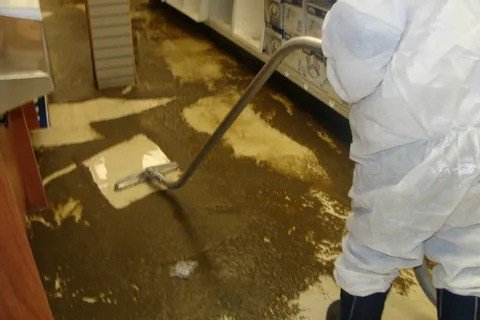Floods are among the most destructive natural disasters a homeowner can face. Whether caused by severe weather, burst pipes, or drainage failures, the effects of flooding are both immediate and long-lasting. In Colleyville, TX, where heavy rains and flash flooding are becoming more common, understanding the steps of effective flood damage restoration is more important than ever in 2025.
This comprehensive guide will walk you through everything you need to know—from the first response to full recovery—so you can act quickly and confidently after a flood damages your home.
What Happens During a Flood?
Flooding introduces large amounts of water into your home, which can:
- Damage flooring, drywall, and structural supports
- Destroy personal belongings
- Increase the risk of electrical hazards
- Lead to mold and mildew within 24–48 hours
Even clean-looking water can contain dangerous bacteria or contaminants, making floodwater a serious health hazard. Immediate response is critical.
Step-by-Step: The Flood Damage Restoration Process
1. Ensure Safety First
Before doing anything, make sure your home is safe to enter. Turn off the electricity and gas if it’s safe to do so. Never walk through standing water without protective gear—it could be contaminated or hide dangerous debris.
2. Contact a Professional Restoration Company
In Colleyville, TX, licensed flood damage restoration specialists are trained to handle emergencies fast. They bring professional equipment, safety expertise, and experience in dealing with insurance claims.
Summit Restoration is one such trusted provider, known for its fast response and thorough service throughout the area.
3. Water Extraction and Dry-Out
Specialized pumps and vacuums are used to remove water quickly. Industrial-grade air movers and dehumidifiers then dry out the affected areas. This process can take several days depending on the extent of the flooding.
4. Damage Assessment and Demolition
Once water is removed, restoration professionals assess what can be salvaged. Contaminated drywall, insulation, carpet, and furniture are removed and safely discarded.
Any remaining materials are cleaned, disinfected, and prepped for rebuilding.
5. Mold Prevention and Treatment
Mold begins to grow rapidly in wet, enclosed environments. Restoration teams apply antimicrobial treatments to prevent mold and mildew from developing. If mold is already present, it will be safely remediated according to health regulations.
6. Repairs and Restoration
The final phase includes rebuilding walls, replacing floors, repainting, and restoring your home to its original—or even improved—condition.
In many cases, flood damage restoration also includes structural repairs, plumbing fixes, and electrical safety checks to ensure your home is truly safe and habitable.
What to Do Immediately After a Flood
While waiting for help to arrive:
- Document the damage with photos or videos
- Remove valuable or sentimental items if safe
- Avoid contact with floodwater
- Open windows to improve ventilation (if weather permits)
- Do not use electrical appliances near water-damaged areas
These actions help reduce long-term damage and make the restoration process smoother.
Why Local Expertise Matters
Hiring a restoration company familiar with Colleyville, TX offers major advantages. Local pros understand regional risks like clay soil movement, basement flooding, and weather patterns. They can also respond faster during storm season when time is critical.
Preventing Future Flood Damage
While you can’t control the weather, you can take steps to reduce future flood risks:
- Install a sump pump with battery backup
- Keep gutters and downspouts clean
- Grade landscaping to slope away from your foundation
- Seal basement walls and floors
- Elevate HVAC systems and electrical panels
Homeowners in Colleyville, TX should also consider a flood insurance policy—many standard homeowners’ policies don’t cover flood damage.
Conclusion
Dealing with a flood is never easy, but understanding the flood damage restoration process can help you regain control in a chaotic time. Quick action, professional support, and local expertise are the keys to restoring your home safely and effectively in 2025.
If you live in Colleyville, TX, don’t wait until disaster strikes. Prepare now, and know who to call when you need help.
FAQs
- How soon should I start flood damage restoration after a flood?
Ideally, within the first 24 hours to prevent mold and structural damage. - Is floodwater always dangerous?
Yes, even if it looks clean. It may contain bacteria, chemicals, or sewage. - Can I do the cleanup myself?
For minor water spills, yes. For significant or contaminated floods, professional help is essential. - Does insurance cover flood damage?
Only if you have a separate flood insurance policy—check your coverage details. - How long does restoration take?
Depending on damage severity, full restoration can take a few days to several weeks.











































